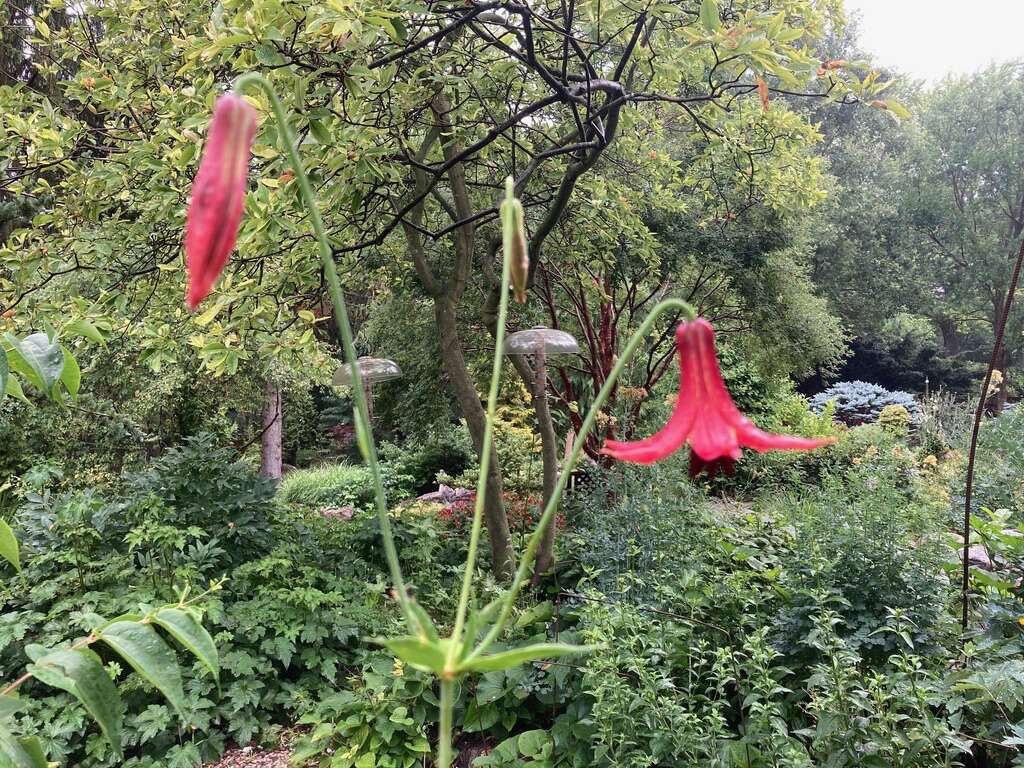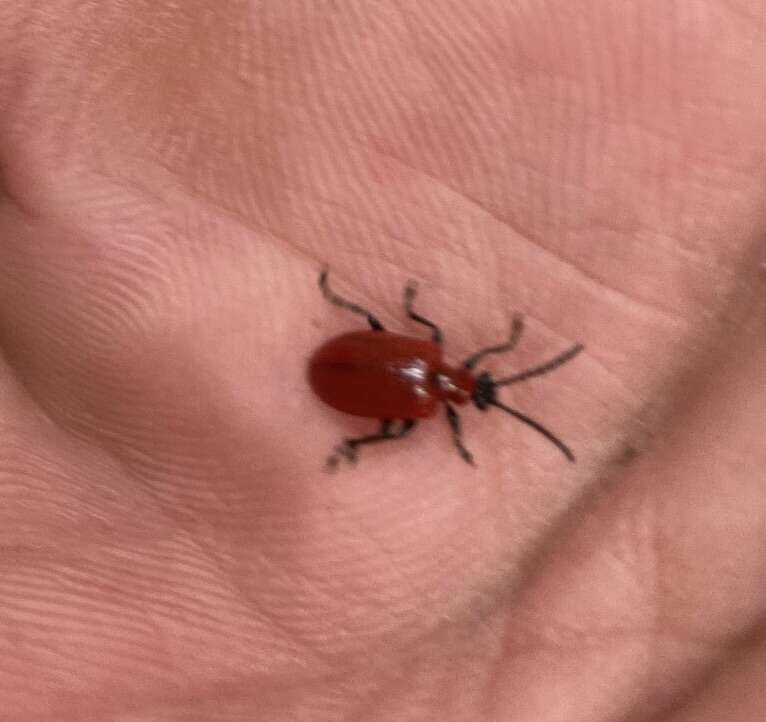
If you’re a gardener, but you haven’t yet experienced the ravages of Lily Beetles in your garden, count yourself among the lucky, but don’t get too complacent just yet. Like the Emerald Ash Borer, Lily Beetles are on the move.
I had first heard of Lily Beetles, in a warning from Marion Jarvie (a renown gardener and lecturer from Toronto Canada). That was (I believe) in the late 1990’s. It was more than a decade later, before I would come upon one in my own garden, and I squished it Pronto! Despite my vigilance, I would not see another red devil, until sometime around 2018 or so. However from then on, they were here to stay.
As I understand it, Lily Beetles arrived on the scene as it were, in Massachusetts, in the early 1990’s. It quickly became apparent that action was needed to battle this invasive pest, and the search was on for a suitable, biological control. Extensive trial studies were made, prior to the release of a predatory wasp, with very positive results. Currently, similar studies are being conducted here in Michigan.
Last year, Andrea & I (in our garden), along with Tony Reznicek (in his own garden) committed to a serious campaign of twice-daily patrols throughout our gardens, search and destroy missions really (once in the morning and again in the evening) checking every lily plant and dispatching all adults and larvi we we could. If they sense impending danger, the adults are surprisingly adept at dropping to the ground and rolling onto their backs with their black, belly-side up, making them all but invisible in the garden litter.
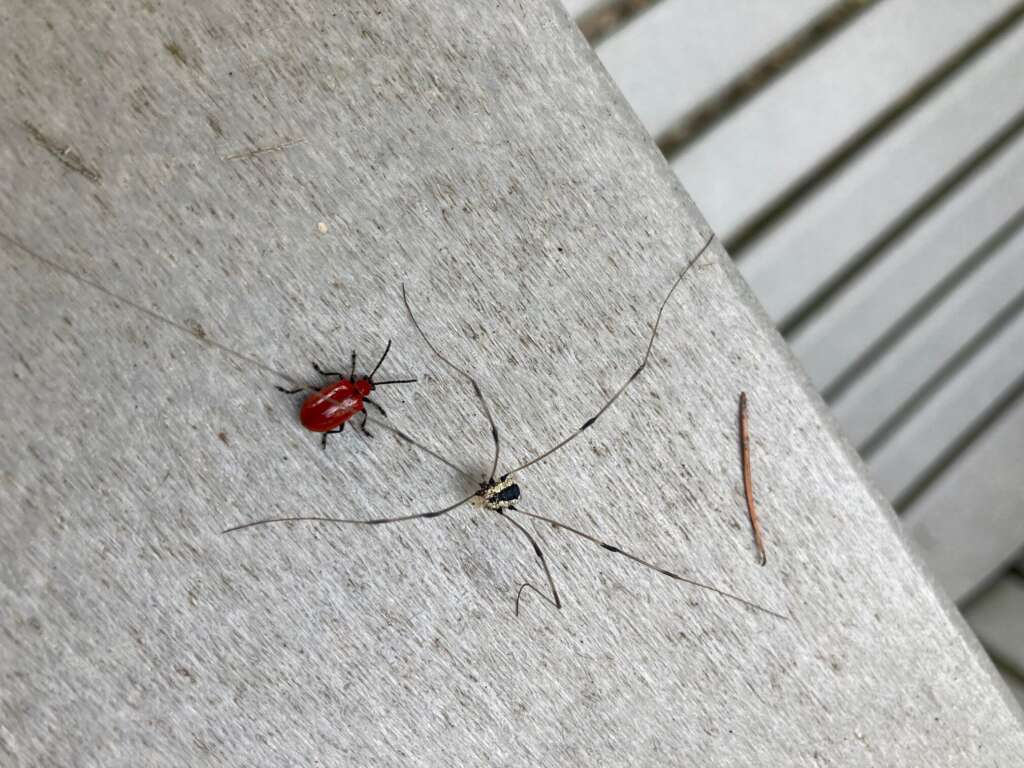

Our efforts paid off noticeably, in that there wasn’t an increase in the number of adults and larva found on our plants, however this changed the following year the following year. To me, it seems as though there is a “flush” of adults, feeding on our plants, mating, laying eggs on the undersides of the lily leaves (the eggs are red as well) and then there’s a period of roughly 10-14 days where there will be almost no (or very few) adult lily beetles. During this dearth-of-adult period, the eggs hatch and the larva begin their work, devouring the leaves, and in the case of young plants, consuming the stems as well. The growing larva have a delightful, protective-mechanism of covering themselves in their own excrement, which I suppose works on the squeamish, but I squish them anyway, right along with any and all adults I can snatch. The larva grow to a point and then drop off to the ground, to pupate in the soil (I’m told till next year).
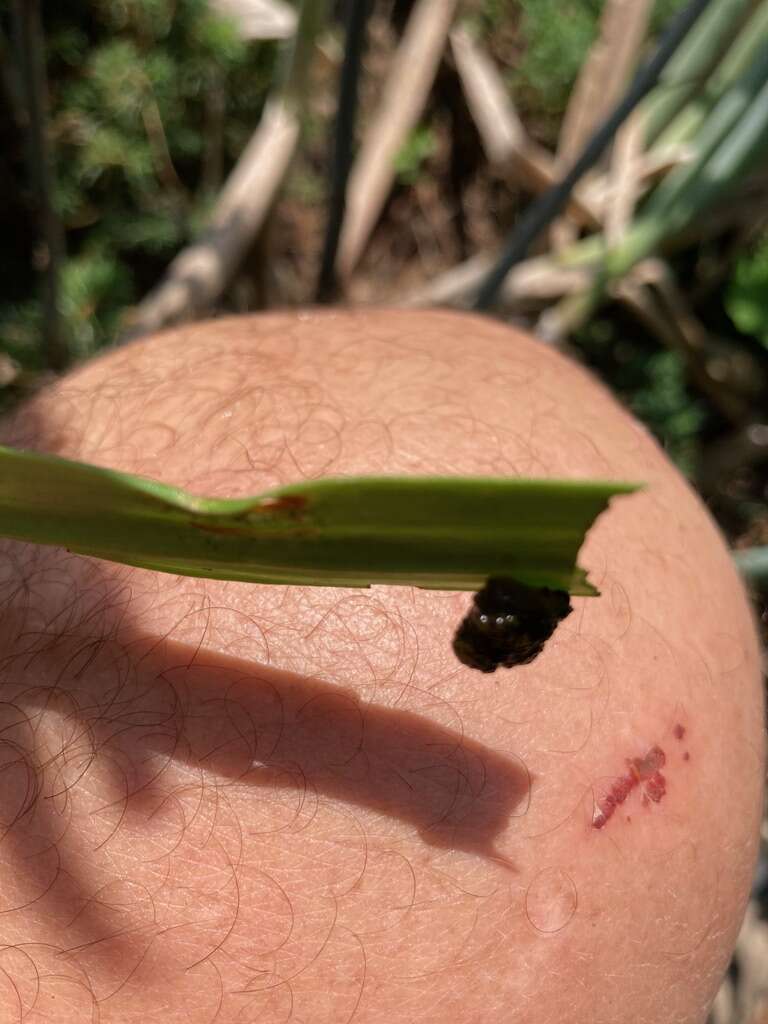
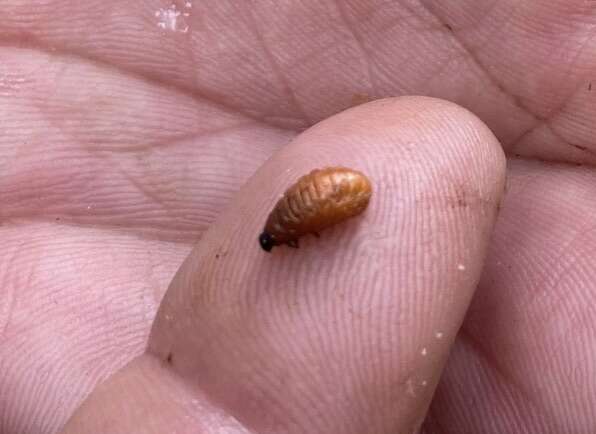
Then, after a two week calm, there’s another flush of adult beetles, and the cycle repeats seemingly in two-week cycles, all summer long. By religiously making our twice daily patrols thru the garden (squishing all beetles & larva alike, even red eggs when I see them) the overall numbers stayed pretty consistent. I do usually miss a couple of the quicker, and perhaps more wary adults, who drop to the ground before I can snatch em.
While the Lily plants might look a little ragged (from the chewing that our pinching fingers interrupted) our plants bloomed and survived enough to replace the bulb, and the following year out plants reappeared, relatively, none the worse from the previous years foliar-damage.
The real pay-off from last years diligence, came in the fewer, overall numbers of Lily Beetles this year, that Andrea & I (as well as Tony) saw in our gardens.
Now we’re not kidding ourselves, new beetles are coming in from neighboring gardens, and until our State’s Trial Studies are completed, and the predatory wasps are released (and wasp numbers increase to sufficient numbers to be effective) we’re going to have to keep up our efforts. And while I’m not tearing out my lilies, I won’t be adding any nor replacing any lilies in the garden. It is a lot of work, but all in all, we seem to be holding our own.
That is until we went away for a long 4-day weekend!
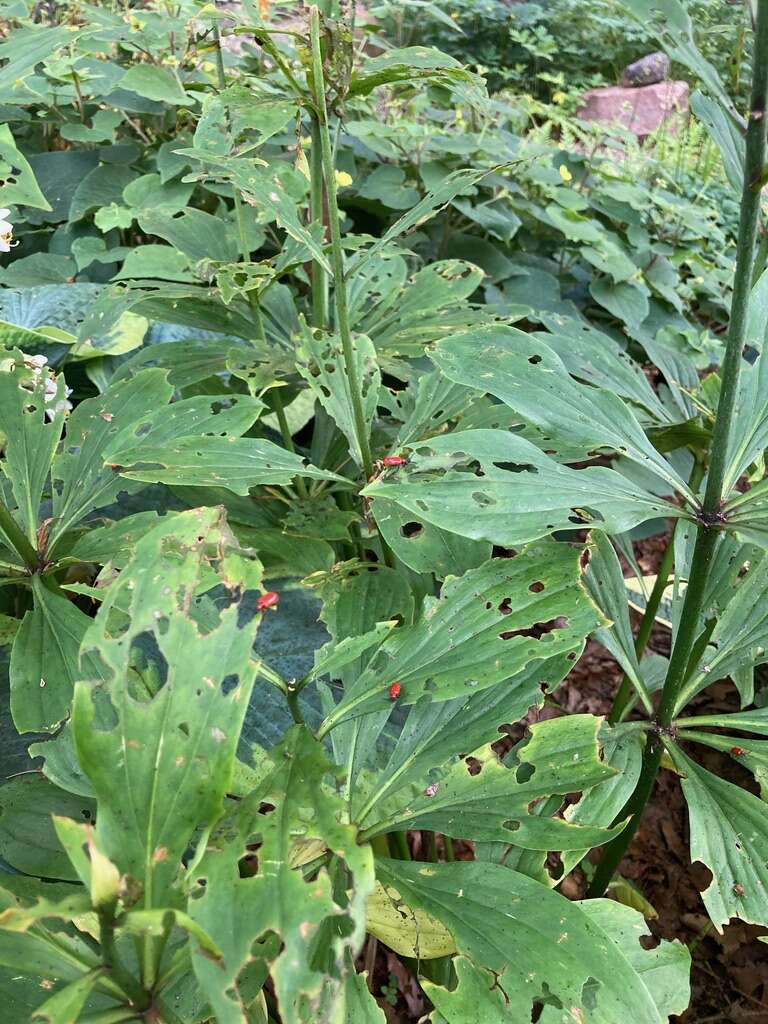
The morning after we returned home, this is what we found. In just 4 days of free rein, the Red Menace had these cherished plants in tatters. I must add that Lily Beetles are so fond of Martagon Lilies, that they’ll keep coming back even to devour the stems if left unchecked.
Tony tells me that the adult Lily Beetles only lay their eggs on lilies, and so far I’ve only found larva on lily leaves. However I have observed, adult Lily Beetles, actively feeding on the leaves of Polygonatums (they seem to find an unusually large form of Polygonatum biflorum I have in the garden especially tasty), Mianathemums, (both racemosa and stellata) but thankfully, and strangely, none of the Asian forms of either Maianthemums nor Polygonatums have been chewed!
Needless to say, that if the State is looking for volunteer test gardens (whenever they’re ready for wasp release), I say “PICK ME ! PICK ME !”
